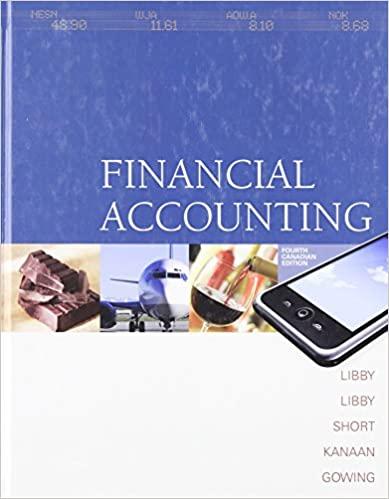Seneca Land Company, a closely held corporation, invests in commercial rental properties. Seneca's fiscal year ends on
Question:
Seneca Land Company, a closely held corporation, invests in commercial rental properties. Seneca's fiscal year ends on December 31. At the end of each year, numerous adjusting entries must be made because many transactions completed during the current and prior years have economic effects on the financial statements of the current and future years. Assume that the current year is 2011 .
Required:
This case concerns four transactions that have been selected for your analysis. Answer the questions for each.
TRANSACTION (a): On July 1,2010 , the company purchased office equipment costing \(\$ 14,000\) for use in the business. The company estimates that the equipment will have a useful life of 10 years and no residual value.
1. Over how many accounting periods will this transaction directly affect Seneca's financial statements? Explain.
2. Assuming straight-line depreciation, how much depreciation expense was reported on the 2010 and 2011 income statements?
3. How should the office equipment be reported on the statement of financial position at December 31, 2012?
4. Would Seneca make an adjusting entry at the end of each year during the life of the equipment? Explain your answer.
TRANSACTION (b): On September 1, 2011, Seneca collected \(\$ 24,000\) for rent of office space. This amount represented rent for a six-month period, September 1, 2011, through February 28, 2012. Deferred rent revenue was increased (credited), and cash was increased (debited) for \(\$ 24,000\).
1. Over how many accounting periods will this transaction affect Seneca's financial statements? Explain.
2. How much rent revenue on this office space should Seneca report on the 2011 income statement? Explain.
3. Did this transaction create a liability for Seneca as of the end of 2011? Explain. If yes, how much?
4. Should Seneca make an adjusting entry on December 31, 2011? Explain. If your answer is yes, prepare the adjusting entry.
TRANSACTION (c): On December 31, 2011, Seneca owed employees wages of \(\$ 7,500\) because the employees worked the last three days in December 2011. The next payroll date is January 5, 2012.
1. Over how many accounting periods does this transaction affect Seneca's financial statements? Explain.
2. How would this \(\$ 7,500\) amount affect Seneca's income statement for 2011 and the statement of financial position at December 31, 2011?
3. Should Seneca make an adjusting entry on December 31, 2011? Explain. If your answer is yes, prepare the adjusting entry.
TRANSACTION (d): On January 1, 2011, Seneca agreed to supervise the planning and subdivision of a large tract of land for a customer, J. Ray. This service job that Seneca will perform involves four separate phases. By December 31, 2011, three phases had been completed to Ray's satisfaction. The remaining phase will be done during 2012. The total price for the four phases (agreed on in advance by both parties) was \(\$ 60,000\). Each phase involves about the same amount of services. On December 31, 2011, Seneca had not collected any cash for the services already performed.
1. Should Seneca record any service revenue on this job for 2011? Explain. If yes, prepare the adjusting entry to record the revenue.
2. What entry will Seneca make when it completes the last phase, assuming that the full contract price is collected on the completion date, February 15, 2012?
Step by Step Answer:

Financial Accounting
ISBN: 9780070001497
4th Canadian Edition
Authors: Patricia A. Libby, Daniel Short, George Kanaan, Maureen Libby Gowing, Robert Libby





